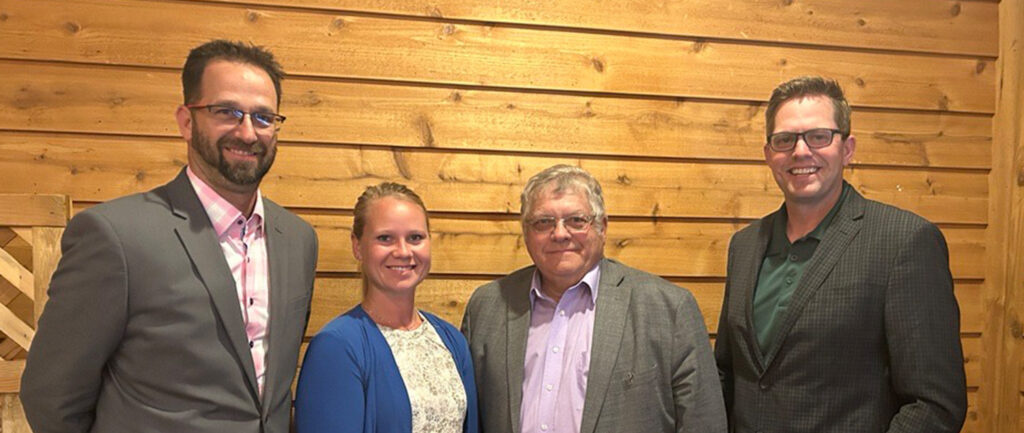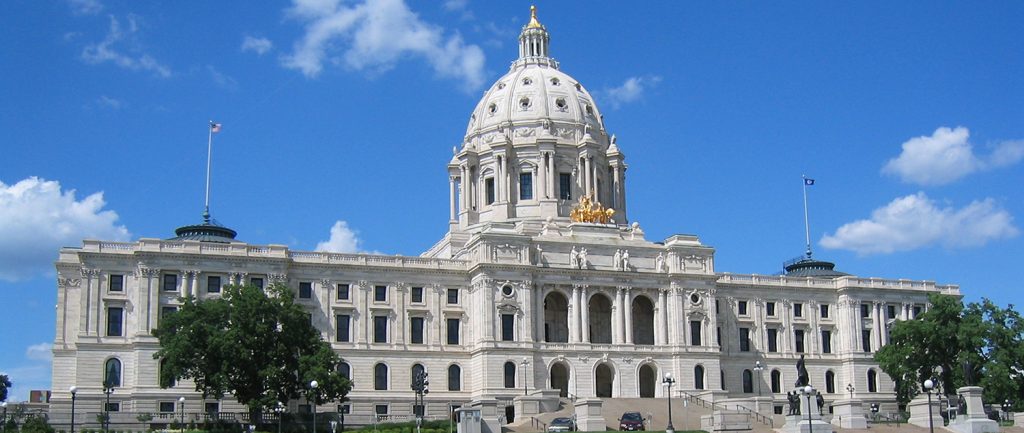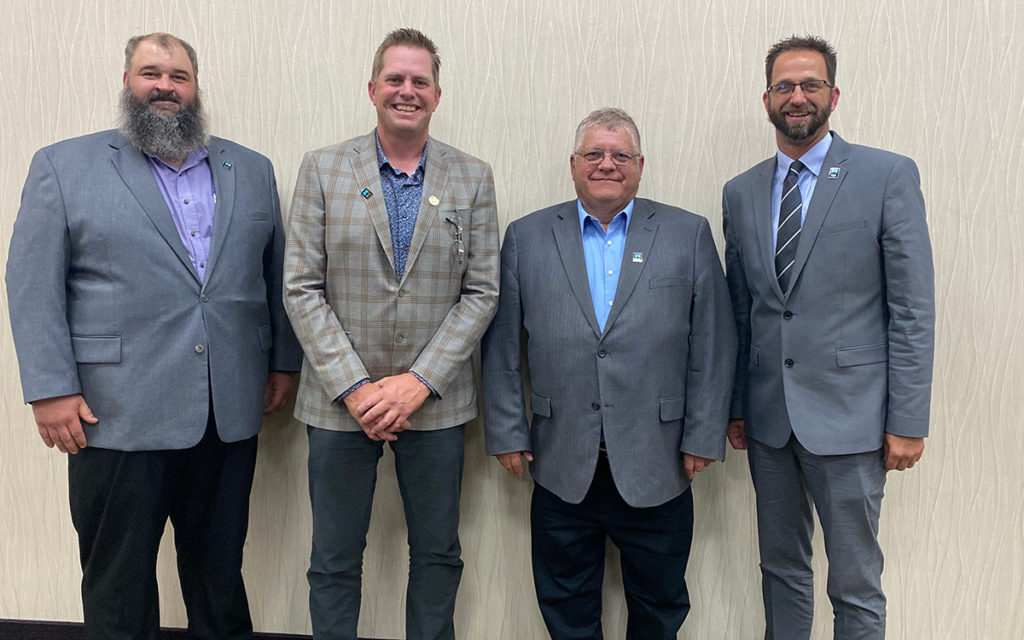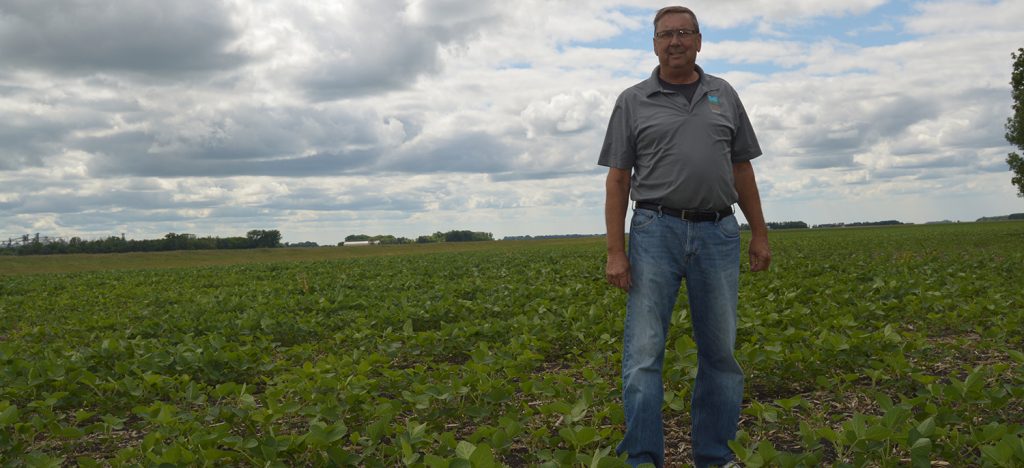This story was first featured in the September – October 2018 issue of Soybean Business. Click here to read the online version of the magazine.
Will a red wall hold back the blue wave?
Once known as flyover country, political eyes will be gazing at the North Star State on Nov. 6.
For the first time in state history, Minnesota will have two women vying for an open U.S. Senate seat. On top of that, the nation’s first Somali-American lawmaker, Ilhan Omar, will try for another first when she attempts to go from the Minnesota House of Representatives to U.S. House of Representatives.
“Minnesota will be one to watch as the November election nears,” says Minnesota Soybean Growers Association (MSGA) lobbyist Cory Bennett. “Because of Senator (Al) Franken’s resignation, it’s a unique year. Minnesota has two U.S. Senate seats to fill, all Minnesota House seats, and several competitive U.S. House races that could ultimately affect which political party has majority control. Minnesota will be a battle ground state.”
While being first can be a source of pride for Minnesotans, little of that will matter if the people running for office don’t start looking out for farmers and their rural neighbors. At the top of that list is Minnesota’s gubernatorial race, with a pair of candidates looking to take the helm from outgoing DFL Gov. Mark Dayton.
“Currently, Minnesota’s Senate and House are both controlled by the Republican party,” Bennett says. “For Republicans, a governor from their party would likely mean total control of the government, if the chambers were to remain the same. If a Democratic governor were to be elected, it would give their party more of a say on some of the upcoming critical issues.”
The following pages are a snapshot of the U.S. Senate and House races as well as the Governor’s race. The candidates’ answers come from panels at Farmfest.
The Governor’s Race: Johnson vs. Walz
In the most contested Minnesota primary election, U.S. Representative Tim Walz (MN-01) and Hennpin County Commissioner Jeff Johnson both emerged victorious.
Walz ousted Minnesota Rep. Erin Murphy, the DFL-endorsed candidate, and Attorney General Lori Swanson. Jeff Johnson, the Republican-endorsed candidate for governor, shocked the state by defeating former two-term Gov. Tim Pawlenty.
With the gubernatorial candidates set, here are five things the candidates said that farmers need to know.
Health care
Johnson: (Democrats) want to move to single payer health care, eventually, and that’s exactly the opposite of where we need to go. The problem right now, at least in parts of Greater Minnesota, you have no options, you have almost no choice whatsoever, and single payer says you truly have no choice, all insurance is gone and you are part of the one government program. We need to move in the opposite direction and give people more options. … Let’s start eliminating some of the coverage mandates … I think we should be able to buy across state lines … That will open the market and give people more choices, and that’s absolutely the direction we need to go.
Walz: For many of us, this is not our first Farmfest. Some of us have stood up here before. In 2006, for some of you who were here then, this is the exact same conversation we had then. When the ACA moved things forward, we started getting people covered, we added millions more and we started reducing prices on those plans or group plans. It didn’t hit the individual market and we knew there was more work to be done. But we were told all these ideas would fix it. Remember the last election? ‘It would be easy,’ they told us. It will happen by February of 2017. None of those things happened. Because this issue is not political. What you want is first of all, is to not to get sick. Secondly, you don’t want to have to go to the doctor but if you do, you want the care to be good, you want it to be accessible and you want it to be affordable. So we should all agree on that piece of it. What we should be focusing on in Minnesota is getting everyone covered through Minnesota Care. We should prevent the diseases that we can. Eighty-five percent of our health care dollars are spent on 15 percent of the population on preventable diseases.
The ag community and appointing a commissioner
Walz: The one thing with this question is you don’t have to guess or try and speculate how I will work with the ag community. We’ve done it together. There are folks in this room and large coalitions and we have written three farm bills together. We’ve moved forward legislation from conservation compliance to things like beginning farmer and ranchers that took putting people in the room, making sure that we heard all voices and coming out with compromises that were in the best interest of Minnesotans. When we make the decision for commissioners … we have everyone sit at the table or sit in the room.
Johnson: I’ll appoint a farmer to head the department of agriculture. Every one of my commissioners will have real-life experience in the area that they’re regulating. Do you know what’s the biggest problem with ag in Minnesota right now? It’s the fact that ag policy is being set by bureaucrats in St. Paul and its being unduly influenced by people who seem to believe that what is most important is the livelihood of bees or birds and butterflies instead of farmers and their families. You know who should influence ag policy in Minnesota? You (farmers) should influence ag policy.
Assisting rural/farm families
Johnson: Well, I’d start with property taxes. I think there was a proposal in the legislature the last couple of years to move the house, 1-acre and garage not just for school operating referendums but also for new school construction, ’cause if it’s good for one it’s good for the other. We simply take too much money from people in this state. It’s not just property taxes. We have one of the highest income taxes in the country. We have one of the highest gas taxes in the country. We have one of the highest sales taxes, one of the highest estate taxes … we need comprehensive tax reform in this state where we start taking less money from people, which includes farmers, all over the state of Minnesota.
Walz: There’s enough uncertainty in the business you partake in, and right now, between weather and politics, you’re getting hammered pretty hard. We are not going to control the weather but we can certainly can control our politics by creating certainty through the things that we do. One of those things is having a plan, making sure our rural communities are revitalized, putting control of those dollars through USDA rural development back into local, county and state decision maker’s hands. Those are things we can make sure we are targeting. Some communities, the issue is we don’t have enough rural child care or affordable housing in those communities. There’s a lot of you in this room that work off the farm to make sure you’re making ends meet. And it comes back to the case is a lot of you are working to pay for your health care. We need to continue to tackle this issue of runaway costs on health care, allowing you to buy into MinnesotaCare, stabilizing those individual markets. Providing those types of certainties will allow you to do this.
Water quality
Walz: My mom’s still on the farm that’s been in our family for over 130 years. This issue of protection of the land and values that go there, they run deep through many generations. We’re going to need, over this issue of how do we do economic activities, whether it is farming and water, whether it’s mining and water, whether it’s lumber and water or whether it’s urban sprawl and water, we’re going to need a proven leader that brings people together to solve these problems. Many of you in this room, we worked together during the last farm bill on the conservation compliance piece … We set standards but we did it not with the regulatory piece on the front end but with the idea of how do we work together and incentivize to get it right? … This is not an issue of we don’t know what we need to do but an issue of politics that is based on divisiveness and dividing us, rather than uniting us for the common good.
Johnson: The biggest problem with the buffer strip law was not how it was rolled out, it was that farmers weren’t included in the problem solving. I have not talked to a single farmer who doesn’t care deeply about water quality. Many of them told me here’s some ideas how we can do it better, whether it’s on a voluntary basis or otherwise. Our state agencies, or at least some of our state agencies, have become so arrogant that they don’t care and that absolutely has to change. My focus in all of my state agencies … they need to actually work with and include the people they are regulating … I think at least some of our regulators should spend a couple days a year working with the people they regulate.
Metro vs. Greater Minnesota
Johnson: There’s a divide and a distrust in Minnesota between metro and Greater Minnesota. I spent the first half of my life in Greater Minnesota. I grew up in Detroit Lakes, with my wife from Crookston. We’ve been in the Twin Cities now for the second half of our lives. I think the fact I have feet in both is going to help bridge that divide … We need to do a much better job prioritizing what people in this state need. Which for me, first and foremost, means roads and bridges. But in the areas where we do need transit, which we do, let’s focus on what’s most cost-efficient, like a world-class bus system, rather than light rail or commuter rail or trolley cars.
Walz: Transportation used be non-partisan. But we have folks again trying to divide us and trying to make a case that one mode of transportation via transit in the Twin Cities was somehow taking from your local roads. … Those include transit and rural transit. They include highways and bridges and township bridges and locks and dams on the Mississippi River. … If you look at it and hear somebody tell you we spent $3 million on a bridge in Jackson County that served about 15 to 20 families and people say, “There’s a waste,” and then I remind them that those 15 to 20 families fed 50,000 people in the urban areas. We work best when we see our common goals. Transportation ties us together.
Candidates take different approach to biofuels
U.S. Rep Tim Walz and Republican nominee for governor Jeff Johnson both were supportive of biodiesel, but for different reasons.
Johnson: I will stand out a little bit today because I have not been a big fan in the past of the government putting its thumb on the market. … However, with respect to both biodiesel and ethanol, because of what the government has done, an entire industry has been built up by the private sector around it and people have spent millions or tens of millions of dollars to build it. … while I may have my questions, I’m not going to pull the rug out from under that because that’s not how you should treat people who rely on a government that’s created a market … We need to create a business climate in this state that is conducive to value added agriculture, not through government mandates or subsides, but because we are competing with states that surround us whether it comes to taxes, whether it comes to regulations or it comes to permitting.
Walz: Our renewable fuels industry isn’t because of the government’s thumb on it, it’s because of American innovation and entrepreneurship created right here in Minnesota. This is an issue, not just of the economy, but it’s about national security. Why would we spend a billion dollars a day importing our energy from countries that hate us when they’ll hate us for free and we can create jobs all across Minnesota? … We need to be very clear now. We need a governor in Minnesota who has the courage to stand up when the EPA administrator, former EPA administrator (Scott) Pruitt, starts gutting the RFS. We can’t have silence in crickets because we can’t challenge folks who are of the same political party.





